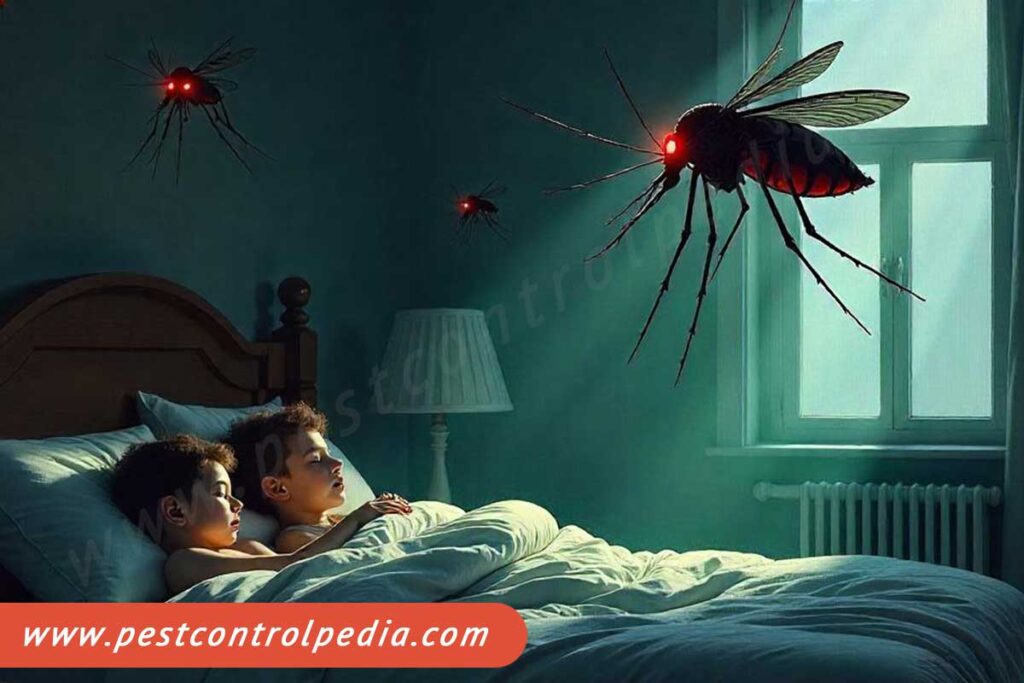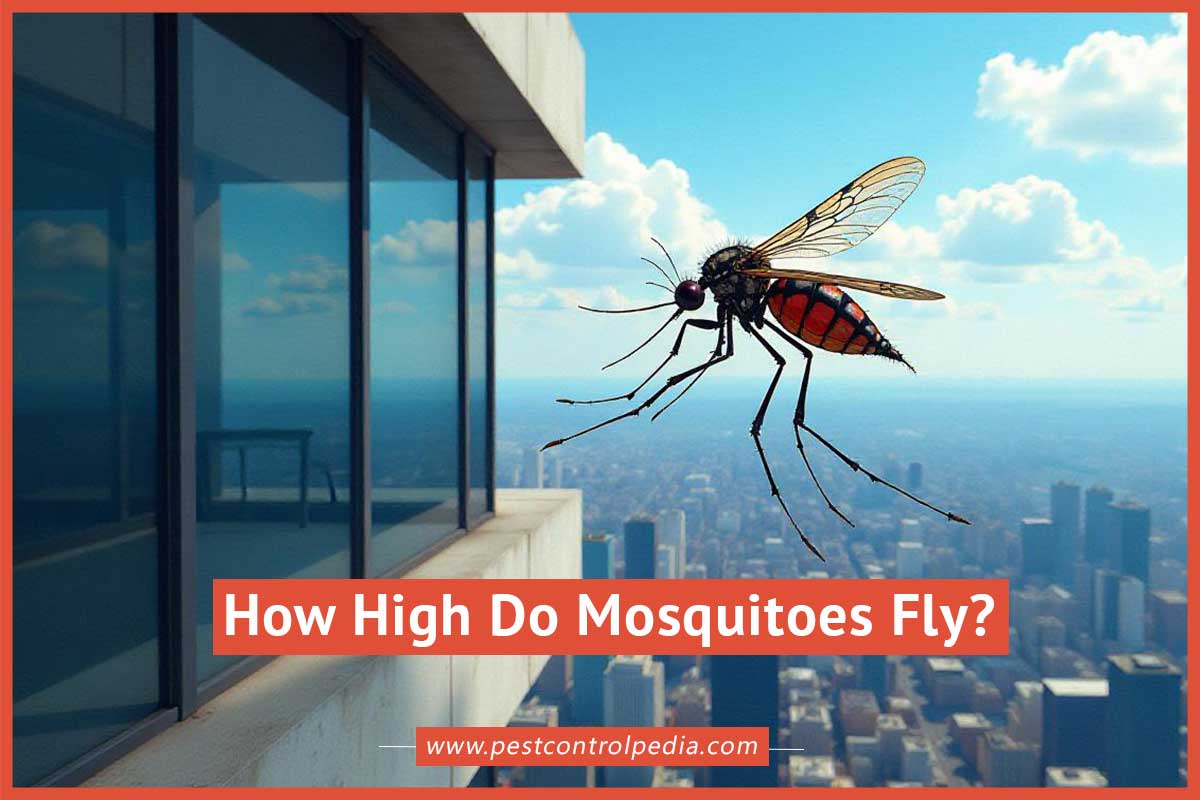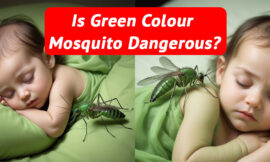Have you ever wondered just how high mosquitoes can fly? These tiny insects are often more than a mere nuisance; they play a significant role in our ecosystems and can affect our health. Understanding their flight patterns is crucial for effective mosquito control strategies.
While we often think of mosquitoes buzzing around our ankles, their behavior can be surprisingly complex. Factors such as temperature, humidity, and even the presence of predators can influence their altitude. This leads us to the intriguing question: how high do mosquitoes fly?
In this article, we will explore the fascinating world of mosquito flight, delving into the anatomy that allows them to soar and the environmental conditions that shape their behavior. By uncovering these secrets, we can better understand their impact on mosquito-borne diseases.
Join us as we uncover the surprising truth about how high do mosquitoes fly, revealing insights that could change how we approach pest control and public health.
Table of Contents
ToggleUnderstanding Mosquito Anatomy
Body Structure and Flight Mechanics
The anatomy of mosquitoes is a remarkable combination of features that enables them to fly efficiently. Their lightweight bodies, coupled with powerful muscles, allow for agile movements in the air.
Key components of mosquito flight include:
- Wings: Mosquitoes have two pairs of wings that beat rapidly, creating lift.
- Muscles: Strong thoracic muscles control wing movement, allowing for precise maneuvering.
- Body Shape: A streamlined body reduces air resistance, enhancing their flying ability.
Species Variation in Flight Capabilities
Not all mosquitoes are created equal when it comes to flight. Different species exhibit distinct flying behaviors and capabilities, influenced by their unique adaptations.
For example:
- Aedes aegypti: Known for its ability to fly at lower altitudes, often found near human habitats.
- Anopheles gambiae: This species can reach higher altitudes, which may aid in its role as a malaria vector.
- Culex pipiens: Typically flies at moderate heights and is commonly associated with urban areas.
Understanding these differences is crucial for developing effective mosquito control strategies, as it helps identify the best methods for managing various species in different environments.

Factors Influencing Mosquito Flight Height
Environmental Conditions
The flight height of mosquitoes is significantly influenced by various environmental factors. Conditions such as temperature, humidity, and wind play a crucial role in determining how high these insects can soar.
Some key environmental influences include:
- Temperature: Warmer temperatures generally increase mosquito activity, leading to higher flight patterns.
- Humidity: High humidity levels can enhance their ability to fly longer distances.
- Wind: Strong winds may force mosquitoes to fly lower to avoid being blown off course.
Behavioral Patterns
Mosquitoes exhibit various behaviors that can affect their flight height. These behaviors are often linked to their search for food or mates, which can lead them to different altitudes.
For instance:
- Mating Rituals: Males often fly at higher altitudes during mating swarms to attract females.
- Searching for Food: Female mosquitoes typically fly lower when searching for hosts to feed on.
- Nectar Feeding: Some species may ascend to higher altitudes when seeking nectar from flowers.
Predation and Safety
The threat of predators also influences how high mosquitoes choose to fly. To avoid being preyed upon, they may adjust their altitude based on the presence of potential threats.
Consider these factors
How High Can a Malaria Mosquito Fly?
Exploring the Altitude of Malaria Mosquitoes
Malaria mosquitoes, particularly those from the Anopheles genus, are known for their ability to fly at significant heights. Research indicates that these mosquitoes can reach altitudes between 40 to 290 meters above ground level.
Factors Affecting Flight Height
The flight height of malaria mosquitoes is influenced by various factors, including environmental conditions and wind patterns. These elements can aid their migration and impact their ability to find hosts for feeding.
Implications for Disease Transmission
Understanding how high malaria mosquitoes can fly is crucial for assessing their role in disease transmission. Higher flight altitudes may allow them to spread malaria over greater distances, posing challenges for control efforts.
Malaria mosquitoes can fly surprisingly high, with some species reaching up to 290 meters. This capability highlights the importance of targeted strategies in managing mosquito populations and reducing the risk of malaria transmission.

How High Can Mosquitoes Fly in a Multi-Storey Building?
Understanding Mosquito Flight in Urban Environments
Many people believe that living in a high-rise building offers protection from mosquitoes. However, these insects can easily ascend to higher floors, making it crucial to understand their flight capabilities.
Flight Altitudes of Common Mosquito Species
Mosquitoes can typically fly up to 8 meters, but some species are known to reach greater heights. In urban settings, they can often be found on upper floors of multi-storey buildings.
Factors Influencing Their Presence
The presence of standing water, gardens, and waste areas in high-rise buildings can attract mosquitoes. These conditions provide ideal breeding sites, allowing them to thrive even on upper floors.
Implications for Residents
Residents in multi-storey buildings should be aware that mosquitoes can invade their living spaces. Implementing preventive measures is essential to reduce the risk of bites and potential disease transmission.
Mosquito Flight Heights: What Research Says
Scientific Studies on Flight Altitude
Researchers have conducted numerous studies to understand the flight patterns of mosquitoes. These studies have provided valuable insights into the maximum heights these insects can reach and the factors that influence their flight.
Some key findings from scientific research include:
- Aedes aegypti: Can fly up to 400 meters high, with most activity occurring below 10 meters.
- Anopheles gambiae: Capable of reaching altitudes of 300 meters or more.
- Culex pipiens: Typically flies at heights ranging from ground level to 50 meters.
Case Studies
Researchers have conducted various case studies to observe mosquito flight patterns in different environments. These studies have helped identify the unique characteristics of each species and their adaptations to various habitats.
For example:
- Urban Mosquito Study: Researchers found that Culex pipiens mosquitoes in urban areas tend to fly at lower altitudes, often below 10 meters, due to the presence of buildings and other structures.
- Tropical Forest Study: A study in a tropical forest revealed that Anopheles gambiae mosquitoes can fly at heights exceeding 100 meters, taking advantage of the dense vegetation and seeking hosts at various altitudes.
- Wetland Mosquito Study: Researchers observed that Aedes vexans mosquitoes, commonly found in wetland areas, typically fly at heights ranging from ground level to 30 meters, with most activity occurring below 10 meters.
These case studies highlight the importance of understanding the specific flight patterns of different mosquito species in various environments, which is crucial for developing effective mosquito control strategies.
Implications for Public Health
Disease Transmission Risks
Understanding how high mosquitoes can fly has significant implications for public health, particularly concerning the transmission of mosquito-borne diseases. The altitude at which these insects operate can affect their ability to reach hosts and spread pathogens.
Key points regarding disease transmission include:
- Altitude and Host Availability: Mosquitoes flying at higher altitudes may have access to a wider range of hosts, increasing the risk of disease spread.
- Species Behavior: Different species exhibit varying flight patterns, impacting their potential as disease vectors.
- Environmental Factors: Changes in environmental conditions can influence mosquito behavior and height, affecting disease transmission dynamics.
Control Strategies
Effective mosquito control strategies rely on understanding their flight behavior and height. By targeting specific altitudes, public health officials can implement more efficient measures to reduce mosquito populations and minimize disease risks.
Some effective strategies include:
- Aerial Spraying: Targeting higher altitudes where certain species are active can enhance the effectiveness of insecticides.
- Breeding Site Management: Reducing standing water sources can limit mosquito breeding, particularly in areas where they typically fly lower.
- Public Awareness Campaigns: Educating communities about mosquito behavior can help individuals take preventive measures against bites.
The Role of Research in Public Health
Ongoing research into mosquito flight patterns is crucial for developing innovative control methods. By understanding how high mosquitoes fly and the factors influencing their behavior, scientists can create targeted interventions that protect public health.
Future research may focus on:
- Genetic Studies: Investigating genetic factors that influence flight behavior among different species.
- Climate Impact Assessments: Understanding how climate change affects mosquito flight patterns and disease transmission risks.
Frequently Asked Questions - FAQS
Q. How high do Anopheles gambiae mosquitoes fly?
A. Anopheles gambiae mosquitoes typically fly at altitudes between ground level and about 10 feet. They prefer low elevations to efficiently locate hosts for feeding, making them less likely to soar to significant heights.
Q. What is the maximum altitude for Aedes aegypti mosquitoes?
A. The maximum altitude for Aedes aegypti mosquitoes is generally around 1,700 meters. They can occasionally be found at higher elevations, but their presence becomes rare beyond this point due to environmental factors.
Q. How far can Culex pipiens mosquitoes travel vertically?
A. Culex pipiens mosquitoes can travel vertically up to approximately 30 feet. Their flight is primarily influenced by the search for hosts and suitable breeding sites within this range.
Q. Do mosquitoes fly higher in humid conditions?
A. Yes, mosquitoes tend to fly higher in humid conditions. Increased humidity can enhance their flight capabilities, allowing them to navigate to greater altitudes in search of food and suitable environments.
Q. How does wind speed affect mosquito flight altitude?
A. Wind speed significantly impacts mosquito flight altitude. Strong winds can push them higher into the air, while calm conditions typically keep them closer to the ground where they are more comfortable flying.
Q. Can temperature influence a mosquito's ability to reach high altitudes?
A. Temperature plays a crucial role in a mosquito's ability to reach high altitudes. Warmer temperatures can enhance their flight performance, enabling them to ascend to greater heights in search of hosts.
Q. Are mosquitoes more likely to fly higher in urban areas?
A. Mosquitoes are often more likely to fly higher in urban areas. The presence of tall buildings can create thermal updrafts, which help them rise and access new feeding opportunities.
Q. Can mosquito repellents prevent them from reaching higher altitudes?
A. Mosquito repellents primarily deter insects from approaching rather than affecting their flight altitude directly. Effective repellents can keep mosquitoes away from humans, regardless of their flying height.
Q. Do taller buildings attract mosquitoes to higher elevations?
A. Yes, taller buildings can attract mosquitoes to higher elevations by providing shelter and warmth. These structures create microenvironments that may be favorable for mosquito activity.
Q. How do mosquitoes navigate to higher altitudes?
A. Mosquitoes navigate to higher altitudes using sensory cues such as temperature gradients and wind patterns. They rely on these environmental signals to find suitable habitats and feeding opportunities.
Q. Are there any predators or obstacles that limit mosquito flight height?
A. Yes, predators such as birds and bats can limit mosquito flight height by preying on them during their ascent. Additionally, physical obstacles like trees and buildings may restrict their vertical movement.
Q. What is the highest altitude at which mosquitoes have been found?
A. The highest altitude at which mosquitoes have been found is around 2,130 meters. At this elevation, species like Aedes aegypti become rare due to unsuitable environmental conditions.
Conclusion
Summary of Key Points
In this article, we have explored the fascinating topic of how high mosquitoes can fly. We have learned that various factors, such as species differences, environmental conditions, and behavioral patterns, influence their flight height.
Key takeaways include:
- Mosquitoes have unique anatomical features that enable them to fly efficiently.
- Different species exhibit varying flight capabilities, with some reaching higher altitudes than others.
- Environmental factors like temperature, humidity, and wind can shape mosquito flight patterns.
- Understanding mosquito flight height is crucial for assessing disease transmission risks and implementing effective mosquito control strategies.
Future Research Directions
As we continue to unravel the mysteries of mosquito behavior, there are several areas that warrant further research:
- Genetic Studies: Investigating the genetic factors that influence flight height and behavior among different mosquito species.
- Climate Change Impact: Assessing how climate change may alter mosquito flight patterns and its implications for public health.
- Advanced Monitoring Technologies: Developing innovative tools and techniques to accurately measure and track mosquito flight heights in various environments.
- Integrated Pest Management Strategies: Creating comprehensive control methods that combine multiple approaches based on flight behavior insights.
By pursuing these research directions, we can gain a deeper understanding of mosquito populations and develop more effective strategies to mitigate their impact on human health and well-being.



